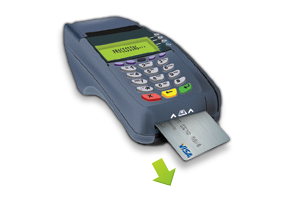[fusion_builder_container hundred_percent=”no” hundred_percent_height=”no” hundred_percent_height_scroll=”no” hundred_percent_height_center_content=”yes” equal_height_columns=”no” menu_anchor=”” hide_on_mobile=”small-visibility,medium-visibility,large-visibility” status=”published” publish_date=”” class=”” id=”” link_color=”” link_hover_color=”” border_size=”” border_color=”” border_style=”solid” margin_top=”” margin_bottom=”” padding_top=”” padding_right=”” padding_bottom=”” padding_left=”” gradient_start_color=”” gradient_end_color=”” gradient_start_position=”0″ gradient_end_position=”100″ gradient_type=”linear” radial_direction=”center center” linear_angle=”180″ background_color=”” background_image=”” background_position=”center center” background_repeat=”no-repeat” fade=”no” background_parallax=”none” enable_mobile=”no” parallax_speed=”0.3″ background_blend_mode=”none” video_mp4=”” video_webm=”” video_ogv=”” video_url=”” video_aspect_ratio=”16:9″ video_loop=”yes” video_mute=”yes” video_preview_image=”” filter_hue=”0″ filter_saturation=”100″ filter_brightness=”100″ filter_contrast=”100″ filter_invert=”0″ filter_sepia=”0″ filter_opacity=”100″ filter_blur=”0″ filter_hue_hover=”0″ filter_saturation_hover=”100″ filter_brightness_hover=”100″ filter_contrast_hover=”100″ filter_invert_hover=”0″ filter_sepia_hover=”0″ filter_opacity_hover=”100″ filter_blur_hover=”0″][fusion_builder_row][fusion_builder_column type=”1_1″ layout=”1_1″ spacing=”” center_content=”no” link=”” target=”_self” min_height=”” hide_on_mobile=”small-visibility,medium-visibility,large-visibility” class=”” id=”” hover_type=”none” border_size=”0″ border_color=”” border_style=”solid” border_position=”all” border_radius=”” box_shadow=”no” dimension_box_shadow=”” box_shadow_blur=”0″ box_shadow_spread=”0″ box_shadow_color=”” box_shadow_style=”” padding_top=”” padding_right=”” padding_bottom=”” padding_left=”” margin_top=”” margin_bottom=”” background_type=”single” gradient_start_color=”” gradient_end_color=”” gradient_start_position=”0″ gradient_end_position=”100″ gradient_type=”linear” radial_direction=”center center” linear_angle=”180″ background_color=”” background_image=”” background_image_id=”” background_position=”left top” background_repeat=”no-repeat” background_blend_mode=”none” animation_type=”” animation_direction=”left” animation_speed=”0.3″ animation_offset=”” filter_type=”regular” filter_hue=”0″ filter_saturation=”100″ filter_brightness=”100″ filter_contrast=”100″ filter_invert=”0″ filter_sepia=”0″ filter_opacity=”100″ filter_blur=”0″ filter_hue_hover=”0″ filter_saturation_hover=”100″ filter_brightness_hover=”100″ filter_contrast_hover=”100″ filter_invert_hover=”0″ filter_sepia_hover=”0″ filter_opacity_hover=”100″ filter_blur_hover=”0″ last=”no”][fusion_text columns=”” column_min_width=”” column_spacing=”” rule_style=”default” rule_size=”” rule_color=”” hide_on_mobile=”small-visibility,medium-visibility,large-visibility” class=”” id=”” animation_type=”” animation_direction=”left” animation_speed=”0.3″ animation_offset=””]
The credit card processing industry can be confusing. For merchants just starting out with credit card payment acceptance, it’s often a difficult journey to find a reputable processor and negotiate a fair fee. How can merchants know they’re getting a good deal?
Depending on your business, your goals, and your values, flat rate pricing might be the best option for your company. Read on to learn what flat rate pricing is and whether or not it aligns with your business needs.
What is flat rate pricing?
Flat rate pricing is one of three common pricing models offered by credit card processors. It’s the simplest and most straightforward out of the three, and for that reason alone, many merchants find it to be a good option.

Flat rate pricing is just what it sounds like: you pay one flat rate for all your credit card processing. The rate is based on a percentage of your overall sales volume. For example, if you process $100,000 in credit card sales in one month, and your flat rate is 2.5%, then you’ll pay $2,500 in credit card processing fees. You negotiate this percentage ahead of time with your credit card processor, so you always know what to expect on your monthly bill.
The other two pricing models—interchange plus and tiered pricing—are a little more complicated.
Unlike flat rate pricing, with interchange plus pricing, the percentage you pay varies from transaction to transaction. This flexibility is mainly based on the type of credit cards you process and how you process them. For example, an exclusive rewards card will tend to have higher rates than an entry-level card, and processing a credit card online will usually cost more than accepting it in person. In addition, other factors influence your processing rates, from changes that occur in the industry, to credit card brands raising or lowering rates, to new cards that cost more to process.

Interchange plus pricing is attractive to merchants who prioritize cost savings. In order to secure lower rates, they take on more risk and responsibility and are subject to factors that may be out of their control. Unlike flat rate pricing, where the fee is set and merchants know what their bill will be ahead of time, merchants who choose interchange plus pricing will have a different cost each month.

The third and final pricing model is tiered pricing. In this model, credit cards are placed into predetermined categories or buckets that dictate the cost of accepting each card. Merchants who choose a tiered pricing structure often overpay for processing, because they have virtually no control over the costs of accepting various cards. In general, it’s best to avoid tiered pricing models, as they offer few benefits to merchants.
Is flat rate right for you?
Flat rate pricing is a great choice for merchants who want stability and peace of mind in their credit card processing. Because the merchant negotiates the rate ahead of time, they’ll know exactly what to expect when their monthly bill arrives. There’s no guesswork or time spent poring over each and every transaction, and even if interchange rates fluctuate, they won’t affect your business or your monthly bill. If you would describe your business as prudent, risk-averse, no-nonsense, or looking for a good deal, then flat rate pricing could be a good fit. Alternatively, flat rate pricing is a solid choice for merchants just starting out with credit card processing, as it allows them to become familiar with the industry in a straightforward way.
If your main concern as a business is to stay hands-off with credit card processing—if you want your focus to be on other parts of the business—then flat rate is the way to go. However, if your main concern is cost, then it may make sense to choose interchange plus. Merchants who choose an interchange plus pricing plan have to do more work to monitor their transactions and ensure their cards qualify at low rates, but in the end, they often pay less to process cards.
Conclusion
Navigating the credit card processing world isn’t easy. With so many different options, confusing terms, and complicated systems, merchants can quickly feel overwhelmed. When it comes to choosing a pricing structure, merchants need to know the different pros and cons so they can make an informed decision.
Flat rate pricing may not be the best choice for every business, but if you’re looking for stability, less stress, and a straightforward monthly bill, then flat rate pricing could be an asset for your business and a breath of fresh air in a complex industry.
[/fusion_text][/fusion_builder_column][/fusion_builder_row][/fusion_builder_container]



